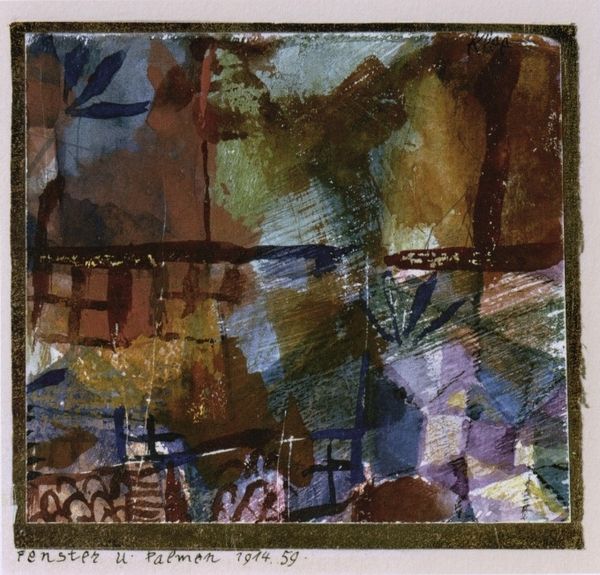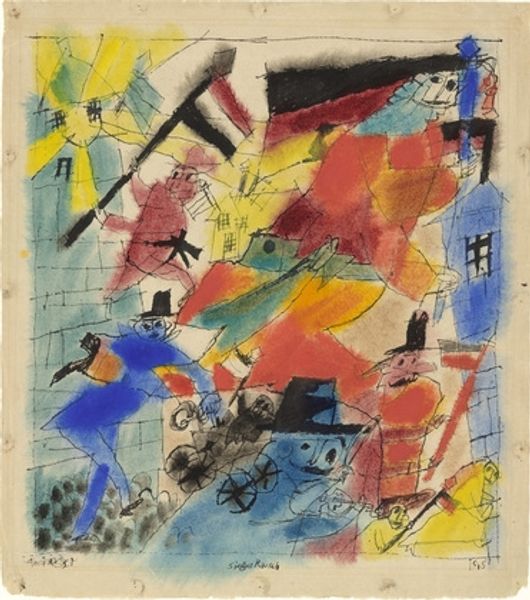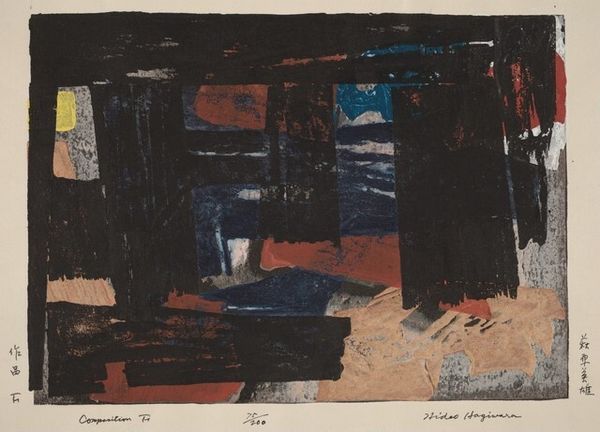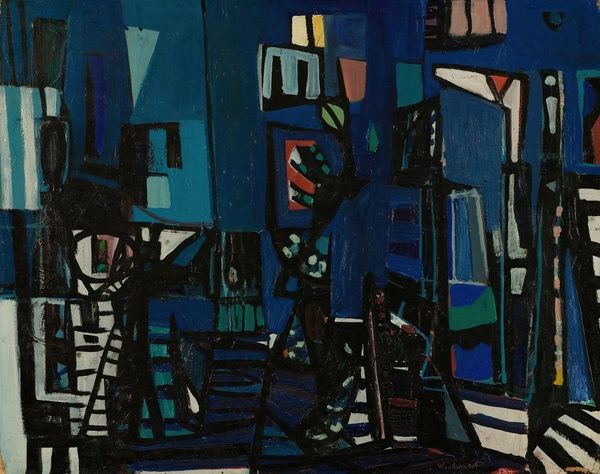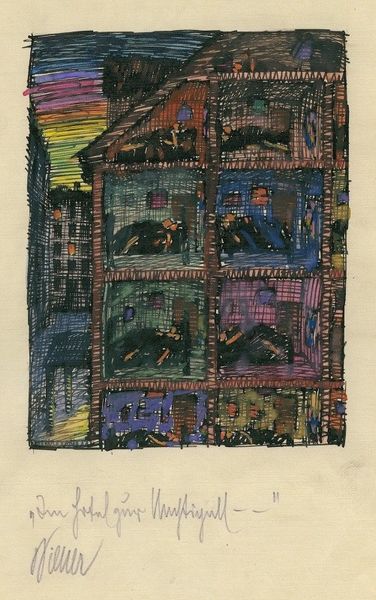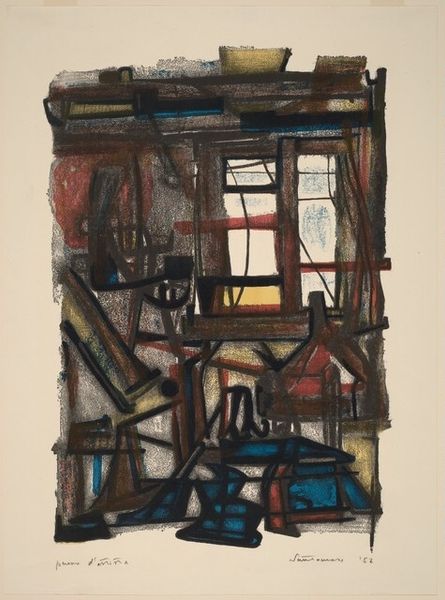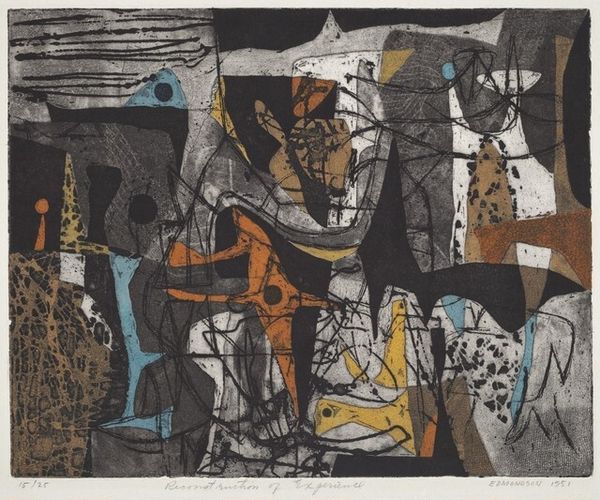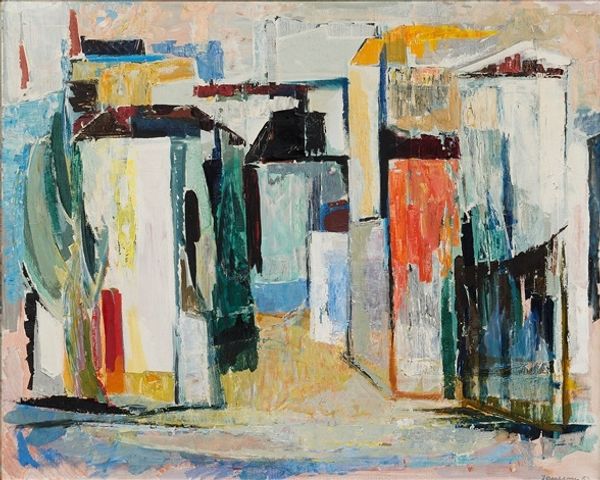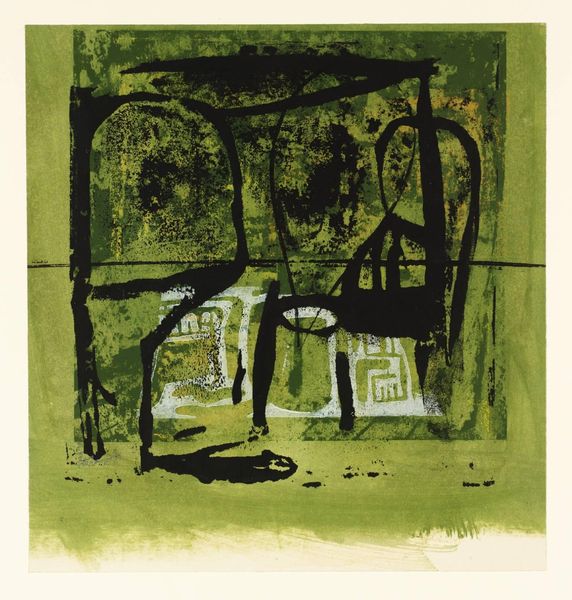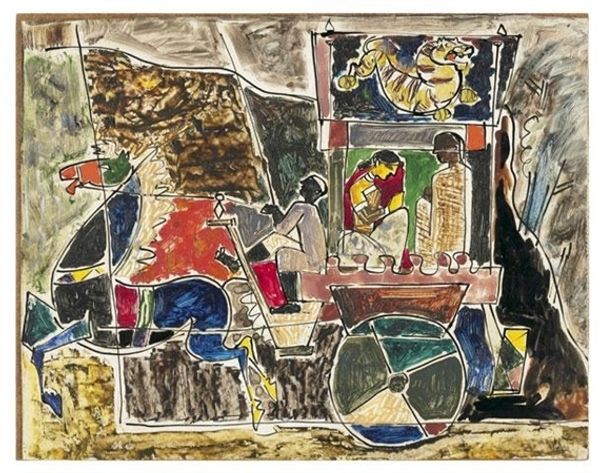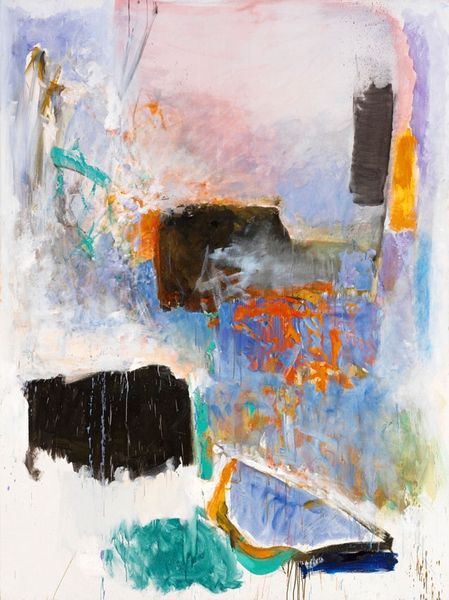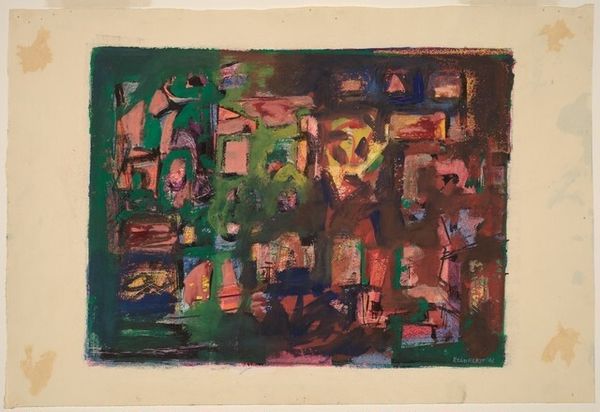
Dimensions: image: 30.8 × 38.74 cm (12 1/8 × 15 1/4 in.) sheet: 43.18 × 52.07 cm (17 × 20 1/2 in.)
Copyright: National Gallery of Art: CC0 1.0
Editor: We’re looking at Warrington Colescott’s 1953 print, "Mountain Village." There's a somewhat unsettling feeling despite the bright colors; the forms seem like distorted architecture. How do you interpret this work? Curator: The disquiet you sense might stem from the historical context. This piece emerges in the aftermath of WWII, a period grappling with reconstruction and the anxieties of the Cold War. How do these architectural forms, seemingly stable yet undeniably fractured, speak to that sense of rebuilding, or perhaps a world irrevocably changed? Editor: That’s a great point. It’s like the memory of a village rather than a concrete place. I wonder if the naivety has something to do with the feeling of aftershock. Curator: Precisely. Think about the concept of collective memory and trauma. The flattened perspective and almost childlike rendering of the buildings can be read as a conscious rejection of traditional, heroic portrayals of landscape, offering instead a more vulnerable perspective. What impact do you think this has on the viewer? Editor: I think it makes it more relatable, but also highlights how unstable everything was at that moment in time. Instead of portraying strength and triumph, Colescott seems to capture a fragile reality. Curator: Absolutely, and it speaks to the role of art as a means of both documenting and challenging dominant narratives. We’re not presented with grand pronouncements but rather with the quiet uncertainty of lived experience, one that resonates across lines of identity and political allegiance. How might contemporary viewers relate to the anxieties present here? Editor: Thinking about current events, the idea of constant rebuilding feels especially relevant, whether it's literal structures or social systems. Thank you! Curator: It’s in making these connections that we truly begin to understand an artwork's enduring relevance, as well as our own historical positioning in response.
Comments
No comments
Be the first to comment and join the conversation on the ultimate creative platform.
